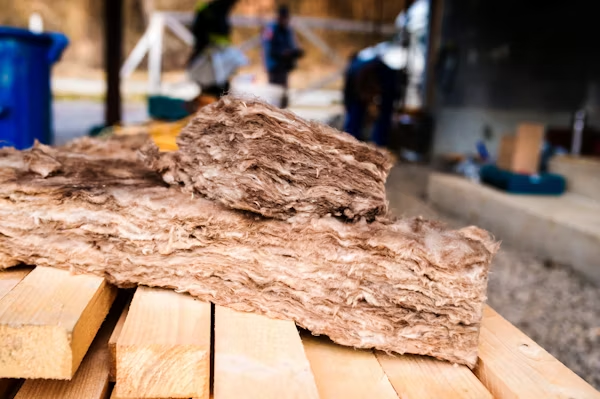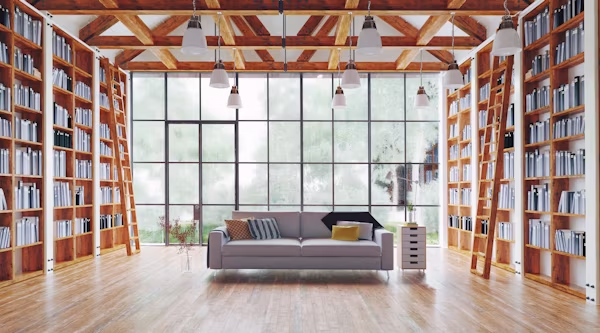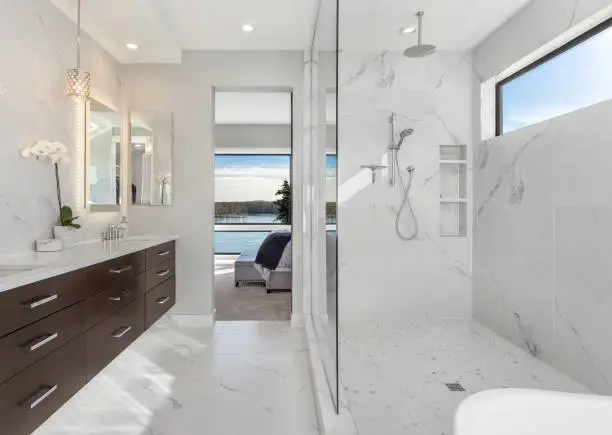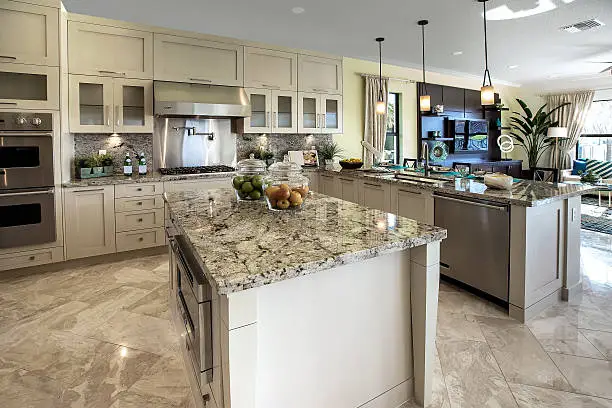Home & Decor
Wood Works Wonders: Eco-Friendly Uses for Natural Materials

Natural materials, particularly wood, have been treasured for their beauty, strength, and versatility for centuries. With an increasing focus on sustainability, wood has emerged as a champion for eco-friendly solutions in various industries. From construction to decor, it offers remarkable benefits, making it a go-to resource for sustainable living. Let’s explore how wood can transform spaces and lifestyles while promoting environmental health.
Why Wood is an Exceptional Eco-Friendly Material
Renewable and Biodegradable
Wood stands out as a renewable resource. Trees, when responsibly harvested, can be replanted to maintain a sustainable cycle. Unlike synthetic materials, wood is biodegradable, meaning it won’t clog up landfills or contribute to long-term environmental damage. When its life cycle ends, wood safely decomposes, returning nutrients to the soil.
Energy Efficiency in Production
Producing wood materials requires significantly less energy compared to manufacturing metals, plastics, or cement. This feature, combined with its insulating properties, makes wood highly energy-efficient both in production and application.
Carbon Sequestration
Did you know that wood actively fights climate change? Trees absorb carbon dioxide during their growth, storing it within their fibers. By using wood in long-lasting applications, such as construction or furniture, the carbon remains trapped, reducing greenhouse gas levels.
Eco-Friendly Applications of Wood
Sustainable Construction Solutions
Wood has made a grand reappearance in modern architecture. Designers increasingly use wood for structural elements such as beams, panels, and flooring. Engineered timber, like cross-laminated timber (CLT), is revolutionizing the construction of high-performance, low-carbon buildings.
Wood-based structures tend to have a smaller carbon footprint and can even outperform traditional steel or concrete constructions in terms of thermal insulation. With proper treatment, these buildings are just as durable, ensuring a long-lasting investment in sustainability.
Stylish and Sustainable Furniture
Wooden furniture is a timeless addition to any home, blending beauty with functionality. By choosing FSC-certified or reclaimed wood, consumers can enjoy natural aesthetics while supporting eco-conscious practices. Classic wood furniture often outlives trends, making it a valuable, long-lasting choice.
Additionally, wood furniture can be refinished or repurposed, extending its lifecycle. A scratched table can gain new life as a pristine stained piece, while leftover wood scraps can evolve into creative DIY projects from shelves to décor.
Interior Décor and Accents
Wood doesn’t just belong in furniture; it’s perfect for small decorative accents that bring warmth and tranquility into your space. Think wall panels, planters, or even hand-carved artwork! Aside from being visually appealing, these wooden touches are often safer than synthetic alternatives, which might off-gas harmful chemicals.
Reclaimed wood, in particular, offers unique charm. Its imperfections and weathered tones tell a story, enhancing the character of interiors while keeping waste material out of landfills.
Wood in Everyday Eco-Friendly Products
Sustainable Packaging
With the increasing push to reduce plastic, wood is being adopted for innovative, biodegradable packaging. Wooden cutlery, food containers, and wrapping paper are now widely available as eco-friendly alternatives. These items decompose quickly and lessen the reliance on disposable plastic.
Clothing and Textiles
It might be surprising to learn, but wood plays a significant role in the textile industry. Fibers derived from wood pulp, such as rayon, lyocell, and modal, are used to create soft, breathable fabrics. These fabrics are not only sustainable but also match the comfort and quality of traditional materials.
Utensils and Everyday Tools
From kitchen utensils to gardening tools, wood provides functional and sustainable alternatives. Wooden spatulas, combs, and toothbrushes are excellent examples of items that reduce reliance on plastic without sacrificing utility or quality.
Preserving Wood’s Natural Goodness
Proper Maintenance
Wood is durable, but it still requires the right care to maximize its lifespan. For instance, sealing outdoor furniture ensures it resists moisture damage, while regular cleaning and polishing keep its indoor counterparts looking pristine.
Reuse and Repurpose
One of the best ways to honor the eco-friendliness of wood is to extend its usefulness. Repurposing old wood into creative projects, like transforming broken doors into headboards, ensures nothing goes to waste. Custom wood products, designed with craftsmanship and sustainability in mind, can also add functionality and style while reducing waste.
Support Responsible Sourcing
When buying wood or wood-based products, look for certifications like FSC (Forest Stewardship Council) or PEFC (Programme for the Endorsement of Forest Certification). These labels guarantee that the wood comes from responsibly managed forests.
The Green Future of Wood
The future of sustainability belongs to materials that balance functionality with environmental responsibility, and wood is leading the way. Whether it’s in your home, workplace, or day-to-day life, incorporating wooden products contributes to smaller carbon footprints and healthier environments.
Adopting natural materials like wood isn’t just about reducing dependence on non-renewables; it’s also about creating a lifestyle that respects nature’s cycles. By prioritizing wood’s many uses, you can enjoy both its beauty and its eco-friendly benefits.
Home & Decor
Design Choices That Make Big Interior Impact

Great interior design isn’t about overspending; it’s about making thoughtful choices that elevate your home’s look and feel. From layout to lighting, smart design strategies can dramatically enhance how a space functions and feels.
Harnessing the Power of Natural Light
Natural light transforms interiors, enhancing mood, creating space, and showcasing colour and texture. Maximise it through large windows, mirrors, and sheer curtains. Skylights and interior glass walls are also effective in brightening darker areas while maintaining privacy.
If you’re seeking tailored solutions to bring more natural light into your home and improve overall ambience, it can be helpful to draw inspiration or seek expertise from professionals in the field, such as those at www.novaricollective.com.au.
Flooring That Anchors the Space
Flooring grounds a room visually and physically. Go for materials like polished concrete, engineered timber, or large tiles for lasting impact and continuity between areas. These choices also increase perceived property value.
Use consistent flooring in open spaces to unify zones, or define areas with rugs and transitions. Keep finishes cohesive for a smooth, intentional flow.
Multi-Functional Furniture for Modern Living
Flexible furniture meets the demands of modern homes. Opt for modular sofas, extendable tables, or storage ottomans to make the most of limited space without sacrificing style or comfort.
Stick with neutral, timeless materials like linen, leather, or wood. These blend well with evolving trends and work across various interior styles.
Colour Psychology and Wall Treatments
Colour directly affects how a space feels. Lighter tones like white, cream, and pale grey expand and brighten, while navy or forest green adds mood and richness. Use darker hues strategically to avoid overwhelming the room.
Introduce texture with limewash, Venetian plaster, or timber panelling. These finishes create warmth, depth, and a sense of luxury without overcomplicating the design.
The Impact of Spatial Planning
A beautiful room can still feel wrong if poorly arranged. Good spatial planning means furniture fits well, traffic flows naturally, and key areas are easily accessible. Leave clear walkways and arrange seating around focal points.
Smart built-in solutions, like banquettes, shelves, or desks, add function while saving floor space, especially in compact homes or apartments.
Personal Touches and Curated Décor
Homes should reflect their owners. Display personal art, keepsakes, or travel finds to add meaning and character. Avoid clutter by rotating items or grouping them in small, themed clusters.
Keep surfaces tidy and décor purposeful. This lets each element breathe and prevents distraction from the overall design concept.
Sustainability in Design Choices
Sustainable design is both ethical and stylish. Choose reclaimed materials, locally made items, and energy-efficient fixtures. This reduces environmental impact while adding value and uniqueness.
Low-VOC paints, organic textiles, and durable surfaces support health and longevity. Small sustainable choices can shape a better interior—and future.
Design That Lasts Beyond Trends
Designing a home that is both visually stunning and practically functional requires thoughtful choices, not endless spending. By focusing on elements that offer high impact, like lighting, layout, colour, and texture, you can transform your home into a space that feels both elevated and deeply personal.
Home & Decor
Designing Your Dream Bathroom: 2024 Trends in Bathroom Remodeling

Bathroom remodeling has always been about improving comfort and function, but in 2024, it’s just as much about expressing personal style and embracing new technology. Whether you’re starting with a powder room or planning a full bathroom transformation, staying on top of the latest trends can help you create a space that’s beautiful, efficient, and totally unique to you. At Renken Remodeling, we’re helping clients across the region bring their dream bathrooms to life—combining design innovation with expert craftsmanship.
Bold Color, Creative Tile
White bathrooms will always have their place, but 2024 is all about color. From deep emerald green vanities to rich navy shower tiles, homeowners are getting bolder with their choices. Tile is becoming a centerpiece, with intricate mosaics, geometric patterns, and even textured finishes making a statement on floors and walls.
Shower remodeling especially benefits from these creative tile choices. Frameless glass enclosures allow bold designs to shine, while built-in niches and benches can be clad in contrasting colors for a custom look. Renken Remodeling has seen growing demand for unique, personalized shower spaces that reflect clients’ personalities.
Floating Vanities and Open Storage
Modern bathrooms are getting lighter and more spacious, thanks in part to floating vanities. These wall-mounted fixtures give the illusion of more floor space and are perfect for showing off statement tile. Open shelving is also trending, making it easier to display beautiful towels, baskets, and plants.
When you’re considering full bathroom remodeling, replacing bulky cabinets with floating or open options is an easy way to modernize your space and create a boutique hotel feel at home.
Smart Tech for Everyday Luxury
Homeowners are embracing technology like never before. Digital showers with preset temperatures, touchless faucets, heated floors, and integrated lighting systems are turning ordinary bathrooms into smart retreats.
Tub to shower conversions are the perfect opportunity to add these upgrades. For example, replacing a little-used tub with a digital shower system lets you enjoy a spa-like experience every morning. Renken Remodeling works with trusted brands to ensure your smart tech is installed perfectly and seamlessly integrates with your lifestyle.
Bigger, Better Showers
If there’s one trend that’s defining bathroom remodeling in 2024, it’s the emphasis on larger, more luxurious showers. Oversized rain heads, body sprays, and hand showers let you customize your experience, while seating, steam options, and music systems create a true retreat. Frameless glass doors and curbless entries keep spaces accessible and easy to clean.
Shower remodeling is about more than looks—it’s about creating a daily escape. Renken Remodeling specializes in crafting custom showers that fit your space, style, and budget.
Tub to Shower Conversions for Modern Lifestyles
The classic soaking tub is losing ground as more homeowners realize they rarely use it. Tub to shower conversions are one of the most requested services for a reason: they create more usable space, improve accessibility, and allow for high-end features that wouldn’t fit in a standard tub alcove.
For busy families, seniors, or anyone seeking convenience, converting a tub to a shower makes daily routines easier. Renken Remodeling recommends this upgrade for anyone looking to modernize a dated bath and increase home value.
Sustainable Choices
Eco-friendly materials, low-flow toilets and showerheads, and energy-efficient lighting are all trending in bathroom design. Water-saving features not only help the environment but can also reduce monthly utility costs.
When you plan a full bathroom remodeling project, it’s the perfect time to choose green options that look beautiful and feel good to use. Renken Remodeling helps clients select sustainable materials and fixtures that match their style.
How to Start Your Dream Bathroom Project
Feeling inspired? Here’s how to get started:
- Set your budget and priorities.
- Gather inspiration photos and think about your must-have features.
- Decide if you want a simple refresh, shower remodeling, tub to shower conversions, or a full bathroom remodeling.
- Contact Renken Remodeling for a personalized consultation.
- Work with your designer to choose colors, materials, and fixtures.
With the right plan and an experienced team, your 2024 bathroom remodel can exceed every expectation.
Conclusion
This year’s trends in bathroom remodeling focus on personality, comfort, and smart solutions. Whether you’re drawn to bold color, tech-savvy showers, or space-saving designs, Renken Remodeling can help you bring your vision to life. From the first sketch to the final fixture, our team is dedicated to creating a space you’ll love for years to come.
Home & Decor
From Quarry to Kitchen: The Journey of Granite Countertops

When homeowners think about transforming their kitchens, granite often comes to mind. Known for its beauty and resilience, this natural stone has been a popular choice for decades. Its polished finish, unique patterns, and timeless appeal make it a centerpiece in any design.
Yet few people realize the journey granite takes before it becomes part of a home. Each slab begins deep within the earth, extracted from quarries around the world before undergoing a detailed process of cutting, finishing, and installation. The result is a surface that combines natural artistry with human craftsmanship.
BNJ Granite & Cabinets reminds homeowners that granite countertops are more than a design element—they are the product of a fascinating journey that brings a piece of nature directly into your kitchen.
The Origins of Granite
Granite is formed from cooled magma, a process that can take millions of years. This slow cooling results in interlocking crystals of quartz, feldspar, and mica, giving each slab its signature look. The variations in mineral content mean that no two pieces are alike.
Quarries located in Brazil, India, Italy, and the United States supply much of the world’s granite. Extracting these massive blocks requires advanced equipment and skilled labor, as the stone is extremely dense.
Quarrying and Extraction
The quarrying process begins with drilling and cutting to separate large sections of granite from the earth. Heavy machinery then lifts and transports these blocks to processing facilities. Precision and safety are essential, as each block can weigh several tons.
At this stage, the granite is raw and unrefined. Its true potential is only revealed once the stone is cut and polished.
Cutting Into Slabs
Once delivered to a factory, the granite blocks are cut into slabs using diamond wire saws and gang saws. These machines slice through the stone with incredible accuracy, producing pieces of uniform thickness.
This step allows the natural beauty of the granite to emerge. Patterns, veining, and colors become more visible, giving each slab a unique personality.
Polishing and Finishing
After cutting, slabs undergo polishing. Industrial machines use abrasives to smooth the surface, bringing out a reflective sheen. Depending on homeowner preference, finishes can range from high-gloss to matte.
Sealing is also applied during this stage. Sealants protect granite countertops from stains, moisture, and daily wear, ensuring longevity once installed in the home.
Selecting the Perfect Slab
One of the most exciting parts for homeowners is choosing their slab. Because each piece is unique, viewing the stone in person ensures you find the right match for your design vision. Lighting, cabinetry, and flooring all influence how the granite will look in your space.
BNJ Granite & Cabinets encourages customers to view multiple options before making a decision. Selecting the right slab ensures your kitchen reflects both function and personal style.
Fabrication for Custom Fit
After selection, slabs are measured and cut to fit your kitchen layout. Skilled fabricators shape the stone to accommodate sinks, cooktops, and edges. Precision is essential, as even minor mistakes can affect installation.
This custom fabrication transforms a raw slab into a tailored piece ready to be installed in your home.
Transportation and Handling
Granite slabs are heavy and fragile if mishandled. Proper equipment and expertise are necessary to move them safely from the fabrication facility to your home. This ensures the stone arrives intact and ready for installation.
Transporting granite requires planning and care, reinforcing the importance of working with experienced professionals.
Installation in the Home
Once delivered, the installation team positions the slabs on your cabinetry. Seams are carefully sealed, and adjustments are made to ensure a perfect fit. The result is a durable, elegant surface that will serve your household for decades.
Professional installation is critical. Without the right tools and experience, granite countertops Long Island can crack or fit poorly. Relying on experts ensures the stone’s beauty is matched by its functionality.
The Lasting Benefits of Granite
Granite remains a popular choice because of its many advantages:
- Durability against scratches and heat
- Low maintenance with proper sealing
- Unique patterns that enhance any design
- Long lifespan, making it a cost-effective investment
These qualities make granite countertops both practical and stylish, blending natural beauty with everyday function.
Sustainability Considerations
Modern quarrying and fabrication processes emphasize sustainability. Many suppliers use water recycling systems, reduce energy consumption, and minimize waste during production. Choosing granite also reduces reliance on synthetic materials, connecting homes to natural resources.
As demand for eco-conscious design grows, granite’s durability and long life make it an environmentally responsible choice.
Final Thoughts
From its origins deep within the earth to its final place in your kitchen, granite undergoes a remarkable journey. Each slab represents a blend of natural history and skilled craftsmanship. The result is a surface that adds both function and beauty to your home.
Granite countertops are more than just surfaces—they are investments in durability and design. BNJ Granite & Cabinets reminds homeowners that every piece of granite tells a story, and by bringing it into your kitchen, you make that story part of your home.

 Blog10 months ago
Blog10 months agoHow to Deal with Scabies While Traveling

 Travel10 months ago
Travel10 months agoRichmond, Virginia Street Art Guide

 Travel10 months ago
Travel10 months agoPerhentian Islands: How to Get There, What to Expect, & More

 Travel10 months ago
Travel10 months agoHow to Live in Your Car in New Zealand

 Travel10 months ago
Travel10 months agoSouvenir in Nepal: A Guide to Unique Handicrafts and Cultural Treasures

 Travel10 months ago
Travel10 months agoVegan Guide to Dining Out in Richmond, Virginia

 Food10 months ago
Food10 months agoVegetarian Food Nepal: A Journey into Flavorful Plant-Based Cuisine

 Travel7 months ago
Travel7 months agoA Local’s Guide to Sanibel Island, Florida















